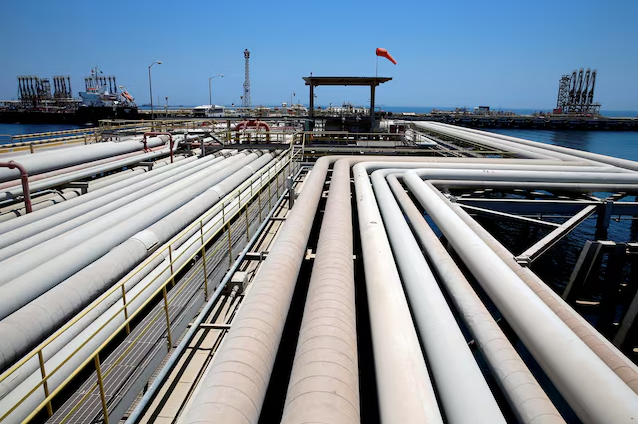
Oil markets have remained remarkably resilient so far this year, despite concerns over U.S. President Donald Trump’s trade policies and rising OPEC+ production quotas. But that strength will now be tested, as Saudi output is starting to surge just as demand appears to be slowing.
Benchmark oil prices are currently near $70 a barrel, down from a 2025 high of $82 in mid-January, but above the four-year low of $62 set in May. That followed Trump’s “Liberation Day” tariff flip-flop, which sparked confusion about the policy direction and fears of a severe disruption to global economic activity and oil consumption.
Investor jitters were compounded by a significant OPEC+ policy shift. Under the leadership of Saudi Arabia, the group including the Organization of the Petroleum Exporting Countries and Russia, started to aggressively ramp up production quotas in April for the first time in over three years. The group is set to add 2.5 million barrels per day of production between April and September.
Given this backdrop, why has crude remained so resilient? It’s likely in large part because most of these fears have yet to materialize.
Crucially, Trump not only delayed his ‘reciprocal tariffs’, but he also held positive talks with Beijing, which managed to defuse some of the market’s worst fears about trade tensions between the world’s two biggest economies. To be sure, economic activity has slowed in recent months, but not nearly as badly as the initial drop in oil prices implied.
Global GDP is forecast to slow to 2.3 per cent in 2025, according to a recent World Bank report, nearly half a percentage point lower than expected at the start of the year. The OPEC+ supply hikes were also initially more talk than action. The decision by OPEC+ to unwind 2.2 million bpd of supply cuts, as well as to raise the United Arab Emirates baseline production by 300,000 bpd starting in April, initially had little impact on global supplies, mostly because several members had already been producing above their assigned quotas.
While Saudi Arabia’s production did rise significantly in June by 700,000 bpd to 9.8 million bpd, a large share of the increase was consumed domestically by its refineries as well as in power plants that use crude to generate electricity during summer’s peak demand, limiting exports. Saudi “crude burn” is set to reach 695,000 bpd in July and is expected to remain elevated in August, according to consultancy Wood Mackenzie.
Shifting tides
The tide may be turning, however. As we move into the second half of the year, the negative trends that spooked investors in April now appear to be building. Trade tensions have come back to the fore in recent days after Trump outlined new tariffs for a number of countries, including allies Japan and South Korea, along with a 50 per cent tariff on copper, and a 35 per cent levy on many Canadian goods. Crude consumption already started to falter in recent months. While demand rose by a robust 1.1 million barrels per day in the first quarter of 2025, growth is set to halve in the second quarter, according to the International Energy Agency.
Importantly, demand in countries that are heavily dependent on trade with the United States seems to have taken a hit. Demand in China dropped in the second quarter from a year earlier by 160,000 bpd, Japan’s by 80,000 bpd, Mexico’s by 40,000 bpd and South Korea’s by 70,000 bpd.
US demand over the same period also contracted by 60,000 bpd, according to the IEA. These trends could accelerate if the trade wars kick in in earnest.
Saudi surge
Meanwhile, oil production is expected to start rising significantly in the coming months, particularly from Saudi Arabia, the world’s top oil exporter, as it ramps up production and as its domestic crude burn eases as summer ebbs.
Saudi’s increase in domestic consumption initially meant its oil exports only rose from 5.9 million bpd in April to 6.4 million bpd in June, according to Kpler data. Saudi shipments are, however, set to surge to 7.5 million bpd in July, the highest since April 2023.
Saudi production and exports are likely to increase further in August as Riyadh seeks to regain market share. Its slice of the global market declined to 11 per cent last year from a 13 per cent average in the previous three decades. The Kingdom’s exports to China are set to rise to the highest in more than two years in August, reported.
The increases in OPEC+ output, together with large increases in production outside the group, are set to increase global supply by 2.1 million bpd to 105.1 million bpd in 2025, according to the IEA.
The energy watchdog forecasts global demand to reach 103.7 million bpd this year, which implies a significant oversupply of 1.4 million bpd in 2025.
Oil prices will therefore likely come under heavy downward pressure in the coming months, particularly once demand ebbs in the fourth quarter. And this downward push will only get stronger if Trump’s renewed trade threats turn out to have real bite.


